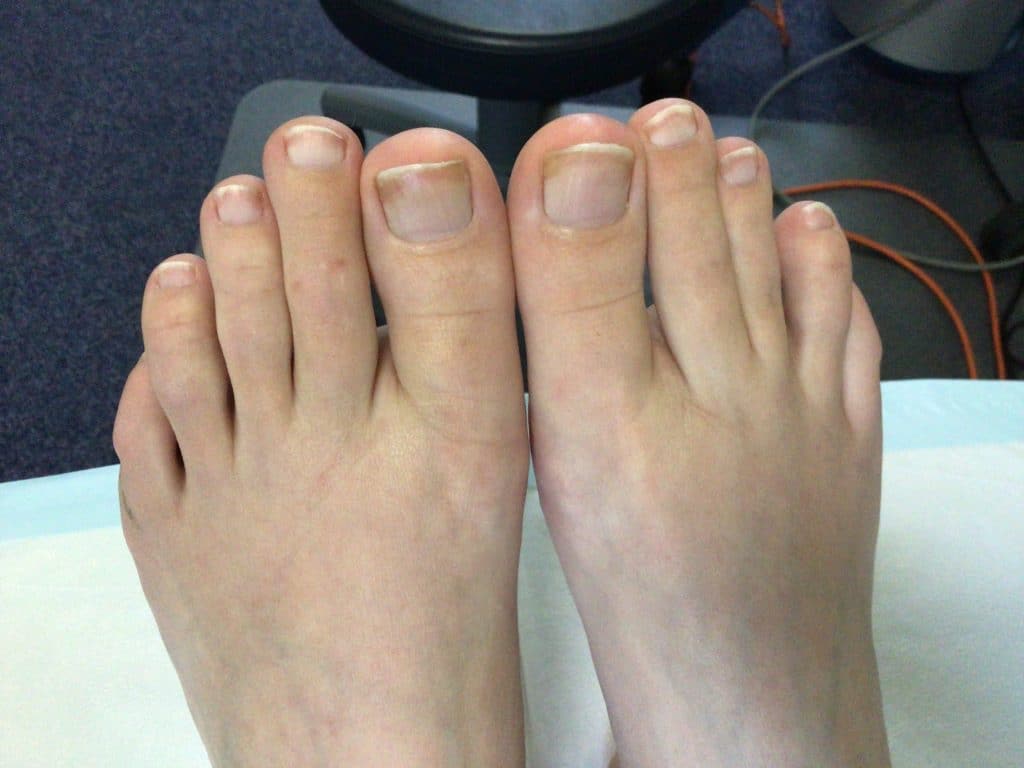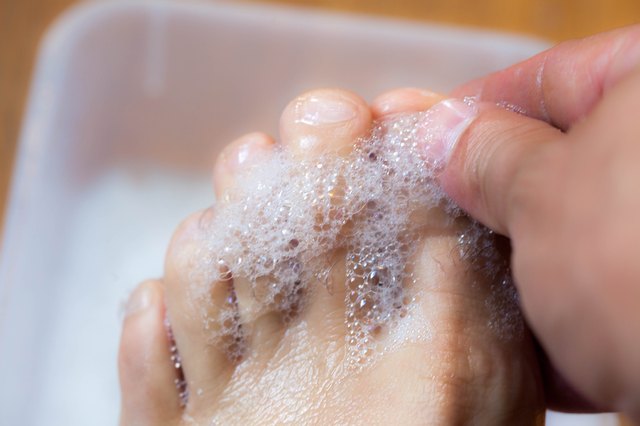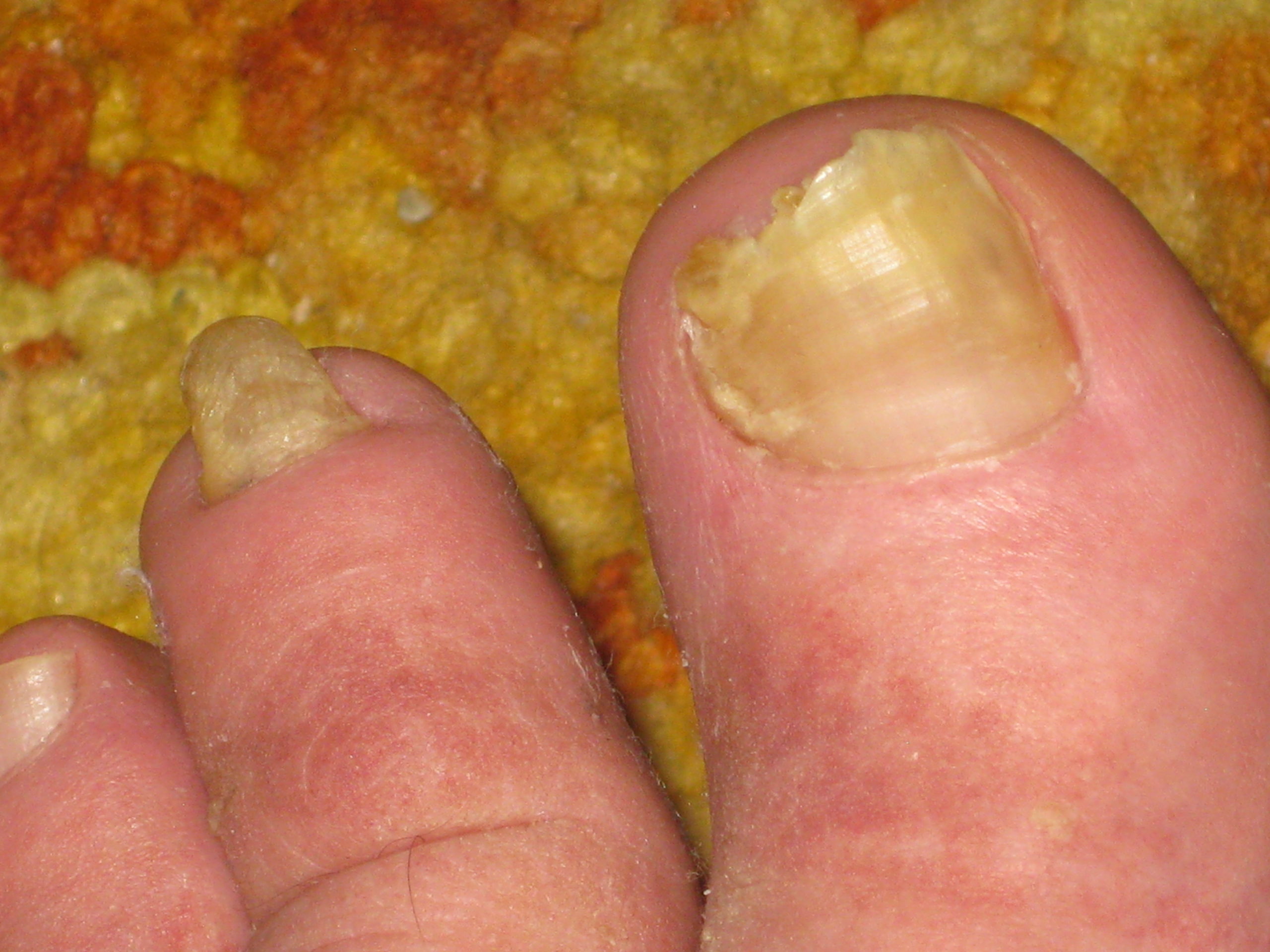Athlete’s Foot: Causes Prevention And Treatment
While it’s not a life-or-death matter, athlete’s foot-especially if it’s persistent-can be painful and make walking difficult.
The early signs of athlete’s foot are patches or fissures , especially between the toes. As the infection progresses, the skin may turn red, become itchy, and appear moist. Small blisters may spread out across the foot, breaking to expose raw fissures that are painful and may swell. The area between the toes is most often affected, but the infection may spread to the soles of the feet or to the toenails, which can become thick and colored white or cloudy yellow. In the most advanced cases, the rash will extend moccasin-style across the sole of your foot, and your feet may ooze pus and develop a foul odor.
How Can I Prevent Athlete’s Foot
Don’t go barefoot in public areas such as the pool or gym where many others are also barefoot. Cut your risk by keeping your feet clean, dry, and powdered with an over-the-counter antifungal foot powder. Other sensible steps:
- Wear synthetic socks, and shoes that breathe shoes that keep water out also keep sweat in.
- Never share shoes, socks, or towels.
- If you get athlete’s foot, wash your socks and towels in the hottest water possible.
- Be doubly cautious if you take an antibiotic. The medication can kill beneficial bacteria that normally control the fungus that causes athlete’s foot.
- Take your shoes off when you go home and let your feet get exposed to the air.
What Is The Treatment For Athlete’s Foot
Since there is no single cause for athleteâs foot there is no single treatment. Nevertheless, all causes of this condition benefit by promoting a dry, clean, and friction-free environment for the feet.
- Occlusive shoe materials, such as vinyl, which cause the feet to remain moist, provide an excellent area for the fungus to proliferate.
- Likewise, absorbent socks like cotton that wick water away from your feet may help.
- Some individuals who sweat excessively benefit from the application of antiperspirants like 20% aluminum chloride .
- Powders can help keep your feet dry.
- Although counterintuitive, if your feet can be soaked in a solution of aluminum acetate and then air dried with a fan, this can be very helpful if performed three or four times within 30 minutes.
- A home remedy of dilute white vinegar soaks, using one part vinegar and roughly four parts water, once or twice a day may aid in treatment followed by evaporation can be helpful.
For fungus infection, there are plenty of options. Many medications are available, including
Read Also: What Is The Best Over The Counter Toenail Fungus Medicine
Chronic Scaly Athletes Foot
Multiple fungi can cause moccasin-type athletes foot, resulting in dry, scaling skin on the sole of the foot. The scale is very fine and silvery, and the skin underneath is usually pink and tender.
Your hands may also be infected, and the usual pattern of infection is two feet and one hand, or one foot and two hands. Less commonly, this infection can spread to other areas of the body.
Chronic scaly athletes foot is associated with fungal nail infections, which may lead to recurrent skin infections.
Symptoms Of Athlete’s Foot

Athletes foot can infect one or both of your feet. Although its primarily an infection of the foot, it can spread to your hands if you scratch or pick at the infected areas on your feet. Symptoms of athletes foot include:
- A red or white scaly rash
- A rash that starts between your toes
- Itching, especially right after removing footwear
- Blisters or ulcers
- Chronic dryness and scaling on the soles of the feet, which can also extend up the side of your foot. This is caused by the moccasin variety of athletes foot.
Recommended Reading: Will Painting Your Toenails Kill Fungus
Treatment For Athlete’s Foot
Athlete’s foot is unlikely to get better on its own. But you don’t usually need to see a GP.
You can buy antifungal medicines for it from a pharmacy. They usually take a few weeks to work.
You can keep using some pharmacy treatments to stop athlete’s foot coming back.
It’s also important to keep your feet clean and dry.
You don’t need to stay off work or school as long as you follow this advice.
How Can You Treat Athletes Foot
There are many noninfective conditions that affect the foot, such as psoriasis and poison ivy. If you are unsure whether your problem is athletes foot , you should visit a physician. Your pharmacist may also be able to recognize the presence of athletes foot. Once athletes foot is confirmed, you may treat the problem with nonprescription products. Generally, OTC products are safer than prescription products, as they have fewer side effects. Used properly, nonprescription products may also cure athletes foot.
Your pharmacist can provide full counseling information on treatment options for athletes foot. You must read the labels carefully and follow all directions provided. Some products can be used in anyone aged 2 years and above, but they must be used twice daily for 4 weeks to produce a cure.
Another product must only be used in those aged 12 years and above, but it can cure athletes foot between the toes in 1 week if used twice daily or in 4 weeks if you choose to use it only once daily. However, it will not cure athletes foot on the bottom or sides of the feet, which is known as moccasin type.
Lamisil AT Cream can also cure athletes foot in those aged 12 years and above. The spray pump and solution forms only cure the condition between the toes if used twice daily for 1 week, but the cream can also cure the infection on the bottom and sides of the feet when used twice daily for 2 weeks.
Don’t Miss: Does A Dermatologist Treat Nail Fungus
How Can You Get Rid Of Sores Between Your Toes
Depending on the cause, sores between toes can be treated using antifungal medication or antibiotics, according to WebMD. Keeping the area between the toes clean and dry also helps the recovery process.
Sores between toes can be caused by fungal infections such as athlete’s foot, bacterial infections such as erythrasma, or blisters, according to WebMD, Merck Manual and MedicineNet.
Athlete’s foot is a very common cause of sores between toes, states WebMD. As athlete’s foot is a fungal infection, it is treated using topical antifungal medication applied directly between the toes. More severe cases are treated using oral drugs. The foot, and especially the area between the toes, should be kept clean and dry to discourage the fungus from spreading.
Various types of bacterial infection, especially erythrasma, can sometimes be mistaken for athlete’s foot as the cause of sores between toes, according to About.com. Bacterial infections are treated with antibiotics such as erythromycin or tetracycline, and cannot be treated with antifungal medication unless there are fungal-related complications, according to Merck Manual. Antibacterial soaps also help to reduce the sores, and topical versions of erythromycin and clindamycin are also effective.
Doctors Weigh Best Treatments
The best treatment for fungal nail infections is a prescription that your dermatologist can prescribe that you take every day for two-to-three months. The pill is not for everyone, since oral antifungals can interact with other medications and can affect the liver.
Fortunately if you dont want to or cant take a pill, there are topical solutions to treat nail fungus. Although topical medications are desirable because of the low risk of side effects and interaction with other medications, they have much longer treatment regimens. Generally, topical medications have a lower clearance rate compared to oral pills.
Newer topical antifungals including Efinaconazole and Tavaborole have better penetration of the nail plate and so they work better compared to older topical medications, says Dr. Ng. She says the topical medications work best if you only have partial nail involvement.
Lasers are approved by the FDA to temporarily increase the amount of clear nail. However, the cure rates are lower than oral medications and topical solutions.
Read Also: Can I Treat Toenail Fungus With Nail Polish On
Tips To Prevent Reinfection:
Keep the feet clean and dry thoroughly, especially in between toes.
Wear cotton socks, ensure to wear a fresh pair every day. Always wash socks in hot water. Never share socks or shoes with others.
Sundry shoes to kill any fungus that thrives inside them, sprinkle a little baking soda or corn-starch in shoes at night that allows absorbing the moisture. Tap it out before wearing.
Avoid wearing tight closed-toe shoes, as moisture and heat may stimulate the growth of the athletes foot fungus.
If the symptoms dont get better in a few days or new problems arise, then seek immediate medical help.
Ask The Doctor: Athlete’s Foot That Won’t Quit
Q.I have been struggling with persistent athlete’s foot. I have tried several over-the-counter medications for several weeks without improvement. How can I rid myself of this rash.
A. Athlete’s foot, a common rash on the soles of the feet and in between toes, is caused by a skin fungus . The rash usually improves with use of antifungal creams and sprays for two to four weeks. If not, you have several options.
First, you might not actually have athlete’s foot. Other skin conditions, especially eczema and dry skin, can mimic the symptoms of athlete’s foot. Your doctor can confirm athlete’s foot by scraping a small bit of scale off the foot and examining it under a microscope.
If you do have the fungus, changing your socks frequently to keep your feet dry will improve the chance that over-the-counter remedies will work. If the rash persists despite your best efforts, talk to your doctor.
Trying a different antifungal cream may also be helpful. Some studies have reported that products containing terbinafine were more effective than those with clotrimazole and similar medications. Prescription oral medications may be required to treat more severe cases.
William Kormos, M.D.
Recommended Reading: Will Vinegar Kill Toe Fungus
Question 1 Of : How Do You Get Rid Of Foot Fungus At Home
What Is Athlete’s Foot

Athlete’s foot is a type of fungal skin infection. Fungi are microscopic plant-like organisms that thrive in damp, warm environments. They’re usually not dangerous, but sometimes can cause disease. When they infect the skin, they cause mild but annoying rashes. Fungal skin infections are also known as tinea infections.
When fungus grows on the feet, it is called athlete’s foot . It got this name because it affects people whose feet tend to be damp and sweaty, which is often the case with athletes. But anyone can get this infection.
Don’t Miss: Do Home Remedies Work For Toenail Fungus
Home Remedies For Foot Fungus
There are many home remedies, both proven and unproven, for athletes foot, toenail fungus, and other foot problems. Soaking the foot in a diluted vinegar or bleach solution can help cure athletes foot. Use baking soda or cornstarch and sprinkle it on the feet to keep them dry or remove odor.
Anti-fungal products can do wonders for toenail fungus. Olive leaf extract is not only anti-fungal but also antibacterial. Orange oil, another anti-fungal ingredient, can be applied to the affected nails to cure toenail fungus. Lavender or oregano oil can also be used.
To treat ingrown toenails at home that are not infected or just barely affected, soak the foot in warm water and Epsom salts, wedge cotton or something else soft underneath the nail to prop it up, and add antibacterial cream.
Take It Easy At First
Athletes foot can come on suddenly and be accompanied by oozing blisters and intermittent burning, says Frederick Hass, MD, a family medicine physician in San Rafael, California. When youre going through this acute stage, baby your foot. Keep it uncovered and at constant rest. Although the inflammation itself is not dangerous, it can lead to a bacterial infection if youre not careful.
Read Also: How To Get Rid Of Tree Fungus Naturally
Natural Remedies To Get Rid Of Fungal Infection Between Toes
In case you didnt know, athletes foot is a type of fungal infection between toes that typically exists and spreads in damp and warm environment.
Tinea pedis is the name of the fungus that expands on the toenails, on top of the foot, between toes and even between fingers. Scaly and white patches, redness and rashes are signs of the presence of this fungus.
In addition, the typical athletes foot symptoms are stinging sensation, itching and burning.
This fungus is often found in public locker rooms and showers, swimming pools and health and wellness centers and it has the ability to spread very quickly.
Getting in touch with socks and shoes where this fungus dwells, wet floor or fitness equipment can lead to the emergence of athletes foot.
Heres How To Get Rid of Ingrown Toenail Without Surgery
How to Prevent Athletes Foot?
People can protect themselves from this harmful fungus by using flip-flops when they are present in public showers or public pools and by making sure that their feet are completely dry after taking a bath or swimming. The area between the toes is crucial.
In addition, people should regularly take care of their toenails because fungus finds the area under the toenails very attractive. In case the toenails are very long they keep the moisture and shelter the fungus. People should never wear sweaty and wet socks or shoes.
What Are The Signs & Symptoms Of Athlete’s Foot
Athlete’s foot usually causes redness, flakiness, peeling, or cracking of the skin on the feet. It may itch, sting, or burn, or simply feel uncomfortable.
It’s usually on the soles of the feet, the areas between the toes, and sometimes the toenails. When the toenails are involved they become thick, white or yellowish, and brittle.
Recommended Reading: How To Get Rid Of Fungus In Toes
Keep Your Feet Dry And Clean
Its important to prevent athletes foot. Fungus can grow in dark, moist areas, making your feet an ideal place for athletes feet to develop. If you have athletes foot , keep your feet as dry and clean as possible.
Change your socks regularly. As soon as youre done working out, clean your feet and put on a fresh pair of socks. Dry the space between your toes. Dont go barefoot in public pool or gym areas.
You should also use shoes that are well ventilated and allow your feet to breathe to help athletes foot resolve more quickly.
When To Seek Medical Care For Athlete’s Foot
If your athlete’s foot inhibits your normal daily activities, you should seek medical attention. If it does not bother you and is only a cosmetic annoyance, then a visit to a medical professional may not be necessary.
A simple fungal infection such as athlete’s foot can become “super-infected” with bacteria. If this should happen, the rash will become increasingly painful and red. Your foot may become swollen, and you may develop blisters and even open sores in the infected area. These are indications that you may need oral antibiotics and will need to call your doctor.
It is unlikely that athlete’s foot would ever become severe enough that a trip to a hospital’s emergency department is required. However, if you have diabetes or any other type of illness that will make it hard for your body to fight off an infection, athlete’s foot may become a more serious skin problem.
If you develop severe pain, redness, or swelling, notice a pus-like drainage, see large blisters on your foot, or develop a fever, you should see your doctor as soon as possible.
Over-the-counter antifungal creams are sufficient for treating most cases of athlete’s foot. Apply them as directed to the toes and foot. Common brands include clotrimazole and terbinafine .
If the topical antifungal medications do not clear up the infection, your doctor may prescribe an oral antifungal medication.
YOU MAY ALSO LIKE
Don’t Miss: What Toe Fungus Looks Like
How To Make A Vinegar Foot Soak
We include products we think are useful for our readers. If you buy through links on this page, we may earn a small commission. Heres our process.
Overview
We demand a lot from our feet. They carry our bodies around all day, often from within uncomfortable shoes. Its no wonder many of us end up with blisters, pain, odor, and fungus, like athletes foot.
Fortunately, theres a simple solution to your woes, and it can be found in your kitchen.
How To Cure Foot Rot Without Seeing A Doctor

Foot Rot, also called athletes foot or the medical term, tinea pedis, is a fungal infection that commonly grows on the feet. The fungus Trichophyton Rubrum can spread to other parts of the body, such as the nails, causing fungal nail infections.
The term athletes foot is so named because the fungus that causes Foot Rot thrives in places where athletes are usually at, like locker rooms and showers where the environmental conditions are warm and moist. Regardless of this fact, it is still possible to contract this fungal infection almost anywhere, directly or indirectly.
The good news is this fungus is largely harmless. As long as the skin is kept dry and clean, their reproduction and spread are limited. We will look at some usual causes, symptoms, and how to cure foot rot easily without needing to visit your local doctor.
You May Like: How Do You Get Fungus On Your Fingernails